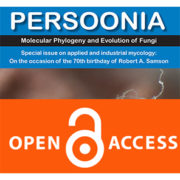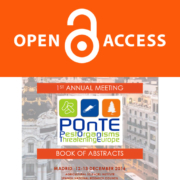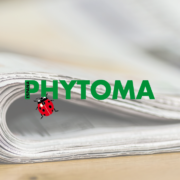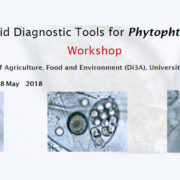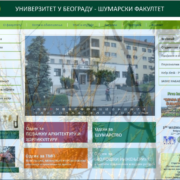Effects of co-inoculations of Alnus incana with Phytophthora alni complex and P. plurivora on disease development and mortality
Authors: Corcobado Tamara; Schwanda Katharina; Daxer Andreas; Hüttler Christine; Cech Thomas
Affiliations: Federal Research and Training Centre for Forests, Natural Hazards and Landscape (BFW). Department of Forest Protection, Unit of Phytopathology. Seckendorff-Gudent-Weg 8, 1131 Vienna, Austria.
Type of contribution: Conference Abstract | Oral Presentation
Conference: 8th Meeting IUFRO Working Party 7.02.09 (Phytophthora in Forests and Natural Ecosystems), Sapa, Vietnam, 19-25 March 2017 (Session 9, Part 1)
Keywords: grey alder, P. xalni, P. xmultiformis, P. uniformis, survival, interactions
Corresponding author: Thomas Cech (BFW)
Abstract
The Phytophthora alni complex exhibits strong host specificity, damaging all European alder species. These pathogens overlap also in their distribution ranges, which may lead to contact and possible interactions between them. P. plurivora is widespread in Europe and has a broad host-range, which includes alder species. Under the same niches, co-infections of these Phytophthora spp. are expected to affect their pathogenic behavior and the disease development. The present study aims to assess the effects of co-inoculations of P. xalni (Pa), P. xmultiformis (Pm), P. uniformis (Pu) and P. plurivora (Pl) on Alnus incana, which is a representative European alder species, but not commonly used in inoculation trials. Two different inoculation treatments were performed on 320 three-year-old plants; soil infestation (70 plants infested with two pathogens) and soil-stem inoculation (250 plants infested with one pathogen and stem-wound inoculated with another pathogen). Mortality was higher in the soil-stem inoculation compared to the soil-infestation four months after inoculation. The presence of Pa or Pm in the stem and/or soil caused higher mortality than the other isolate combinations. When the same Phytophthora species was inoculated in the soil and the stem, survival curves between Pa, Pm and Pu were similar, while they differed significantly from Pl. In the soil infestation trial the two isolates combination groups (Pl/Pm, Pa/Pm), which caused mortality within 131 days after inoculation, showed no differences in their survival curves. In the soil-stem group, Pa and Pm produced higher numbers of collar and stem lesions compared to Pl, while Pu caused more damage in the stem than in the collar. Results also showed that stem lesions differed significantly between Pl and the other species, and between Pm and Pu. Regarding the soil infestation trial collar lesions and mortality were only observed when Pm was present in combination with Pa and Pl. These preliminary results will be discussed in detail.


